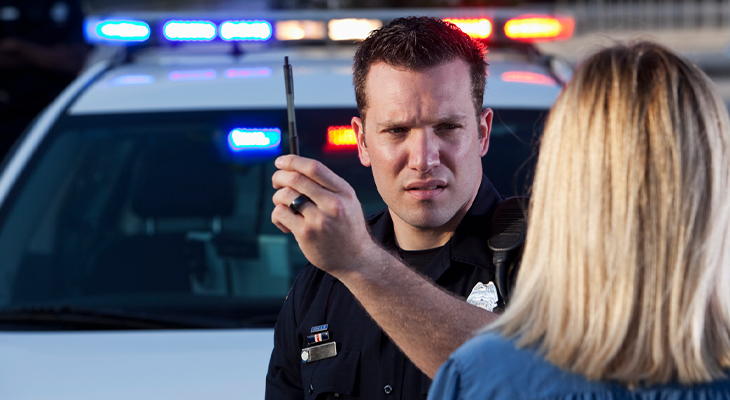
If a police officer or any other member of law enforcement suspects you of driving while under the influence of drugs or alcohol, you might be asked to go through a series of tests to help establish probable cause for the officer to make an arrest and charge you with driving under the influence.
They are designed to help law enforcement officers determine whether or not an individual is impaired or intoxicated. There are several tests that officers use; however, many of them are far from perfect and have led to many being wrongfully arrested.
In this blog, we have listed the most commonly used tests performed by officers when they believe someone is driving under the influence.
Horizontal Gaze Nystagmus Test
The HGN test is administered as a way to test the alleged offender’s eyes. The term ‘Nystagmus’ is generally used to describe any sort of bouncing or jerking of the eye. Individuals who show signs of this condition are usually unaware since it does not have any effect on their vision. Hence, it is nearly impossible for an individual to realize that their eyes are horizontally moving in an inconsistent, jerky manner.
When officers perform the test, they usually asks the driver to follow a pen, their finger, or another small object as they move it side-to-side, only without moving their head. The officer looks for jerky eye movement, which could be a sign of intoxication.
Nevertheless, know that jerky eye movement is not a bonafide giveaway of intoxication, there are several other causes for it. These include sedatives, vision loss, and multiple sclerosis.
Walk And Turn Test
Another commonly used test to check the sobriety of a person is the walk and turn test. It tests the suspect’s ability to follow instructions, consistently maintain balance, and walk in a straight line for an extended period of time.
The officer will most likely ask you to take heel-to-toe steps while walking in a straight line. You will be asked to keep your arms at your side as you walk. The officer will look for lack of balance, an inability to follow directions, and other signs of impairment.
One-Leg Turn Test
Also known as the One-Leg Stand Test, this is probably the most common test that officers use. The suspect is asked to stand with one foot at least 6 inches in the air. You will also have to count out loud for as long as the officer requires you to. The test usually lasts for 30 seconds.
While you are standing on one foot, the officer will look for impairment such as swaying while balancing, using arms to balance, hopping to maintain balance, and putting the foot down before being told to.
Romberg Balance Test
Another common test is the Romberg balance test, designed to evaluate balance and neurological function. It is based on the notion that individuals need two of the following three functions to maintain proper balance:
- Vision
- Vestibular function
- Proprioception
Hence, if the driver is unable to maintain proper balance using two of three functions, it is interpreted as a sign of intoxication.
If the officer performs the test, you will be asked to stand upright with your feet together, close your eyes, and tilt your head back. You will then be asked to attempt to estimate when 30 seconds of time have passed.
About Slaferek Law
Slaferek Lawyers are highly proficient at strategizing effective defence strategies that can lead to case dismissal, reduced charges, reduced penalties, and more. To get in touch with us today, click here. You can contact us to deal with all sorts of legal issues. Our expertise lies in criminal cases and DUI cases.
